Scientific Name(s): Wisteria spp.
Abundance: common
What: flowers
How: raw
Where: landscaping, sunny borders
When: spring
Nutritional Value:
Dangers: only the flowers are edible, everything else is TOXIC!
Leaf Arrangement: The leaves of wisteria are arranged alternately along the stem.
Leaf Shape: Leaves are typically compound, pinnately divided into numerous small leaflets.
Leaf Venation: Pinnate venation, with veins running from the base to the tip of each leaflet.
Leaf Margin: The leaflets typically have entire margins.
Leaf Color: The leaves are usually medium to dark green.
Flower Structure: Wisteria produces fragrant flowers that are arranged in pendulous clusters called racemes. The individual flowers have a unique pea-like structure with a banner, wings, and keel petals.
Flower Color: Flowers can vary depending on the species, but they are often shades of purple, blue, pink, or white.
Fruit: The fruit is a legume pod, usually elongated, flattened, and typically a few inches long..
Seed: Inside the pod are numerous small, hard seeds that are typically brown or black. These seeds are often shiny and have a smooth surface.
Stem: The stem is typically a climbing vine, often with woody, twisting branches.
Hairs: Fine hairs may be present on some parts of the plant, including the stem and leaves.
Height: Wisteria can climb and trail on various supports and can reach significant heights, sometimes over 30 feet.
Wisteria vine.
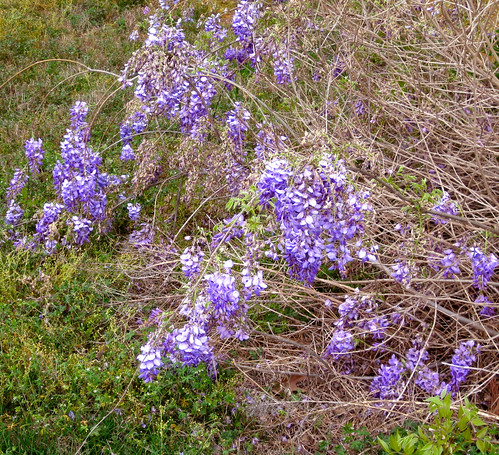
Wisteria flowers.
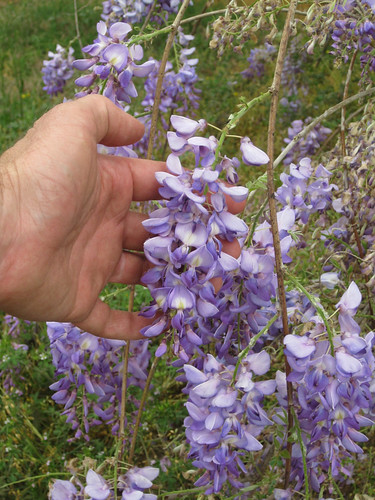
Wisteria flowers closeup.
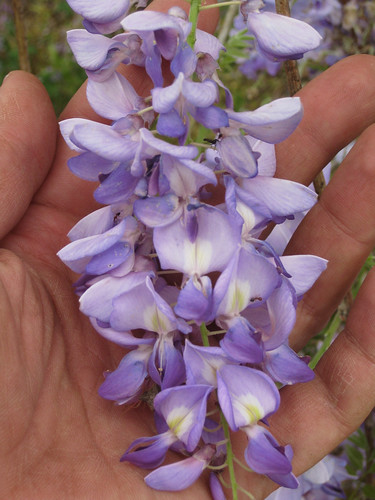
Texas distribution, attributed to U. S. Department of Agriculture. The marked counties are guidelines only. Plants may appear in other counties, especially if used in landscaping.
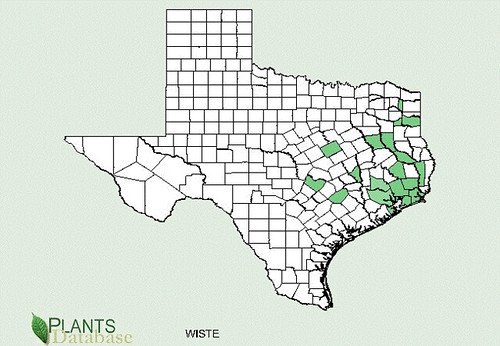
North American distribution, attributed to U. S. Department of Agriculture.
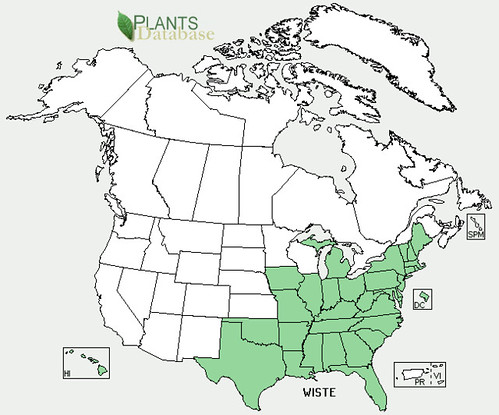
The fragrant flowers of wisteria make a wonderful addition to salads or just nibbled as a raw snack. Long ago they were used to flavor wines, but I haven't had a chance to try that. Note that all other parts of the plant (leaves, stem, seeds etc...) are very toxic and must not be consumed!
Buy my book! Outdoor Adventure Guides Foraging covers 70 of North America's tastiest and easy to find wild edibles shown with the same big pictures as here on the Foraging Texas website.






